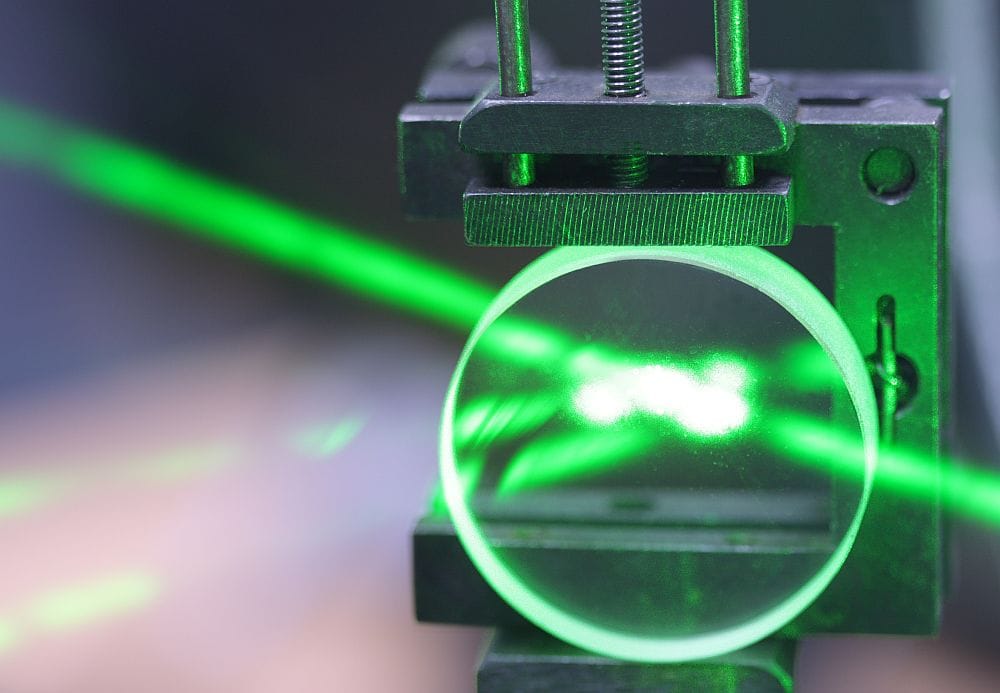
[Image above] Flexible and biocompatible artificial retinas may lead to improved treatment options for patients with significant eye diseases. Credit: Pixabay
Retinitis pigmentosa (RP), a hereditary eye disease that causes progressive visual loss, affects more than 1.5 million people globally. To address this serious health issue as well as other retinal diseases that can lead to blindness, researchers around the world are working to develop retina prostheses.
Retinal prostheses are implantable electronic devices designed to stimulate sensation of vision in the eyes of individuals with significant retinal diseases. But to date, efforts to develop retinal prostheses have achieved limited success.
In 2013, the Argus II became the first retinal prosthetic device to be approved by the FDA for late-stage RP. Unfortunately, this device, which featured an array of 60 silicon-based electrodes, was discontinued due to the small population of patients with RP, leaving these patients with no support.
Since then, researchers have turned away from creating rigid electrode-based implants due to several disadvantages with this format. For example, low resolution, the need for external hardware, potential for soft tissue damage, and possible complications of brain implantation.
Instead, researchers are investigating flexible, biocompatible implants using a variety of technologies and materials. For instance, at Yonsei University in the Republic of Korea, researchers developed an artificial implant that combines flexible ultrathin phototransistor arrays with 3D-printed, liquid-metal electrodes. Tests showed it could restore vision in mice.
Other organizations have gone one step further, creating artificial retinas that are not just biocompatible but also bioinspired. For example, drug startup LambdaVision, which was founded by University of Connecticut Professor Emeritus Robert Birge and colleagues, is designing and developing a protein-based artificial retina.
LambdaVision’s artificial retina combines alternating layers of a polymer with the protein bacteriorhodopsin. This protein is similar to the visual pigment rhodopsin found naturally in the human eye, according to the company website. It mimics the light-absorbing properties of photoreceptors and can activate neural cells still present in the degenerated retinas of patients.
In December 2023, researchers at Sungkyunkwan University in the Republic of Korea published a paper describing a new bioinspired artificial retina. But unlike other retina-like devices reported in the literature, their device does not require external power to modulate the output signals. Instead, it is based on a simple resistor structure.
To develop this structure, the researchers used a fibrous platform rather than the planar platform reported in many previous studies. This approach more closely mimics the structure of the human retina and fiber-shaped optic nerve.
In previous work here and here, the researchers showed that visible-light responsive materials can be integrated with zinc oxide (ZnO) nanorods to form stretchable photodetectors. These devices could detect light ranging from ultraviolet to near-infrared. Based on this success, the researchers used ZnO nanorods in the construction of their new fibrous artificial retina.
Their artificial retina is based on a two-terminal structure. Previous synaptic devices based on organic–inorganic hybrid transistors employed a three-terminal structure, but that resulted in higher power consumption.
The retina is composed of three layers formed vertically onto a polyurethane fiber:
- ZnO nanorods form the sensing layer, which functions in a manner similar to that of photoreceptor cells. In other words, the nanorods act as presynaptic neurons, absorbing the incident light and generating electron-hole pairs.
- The electron-hole pairs form the depletion (intermediate) layer, which operates like a bipolar cell. These cells transmit signals from the photoreceptors to the ganglion cells.
- A polymer mixture known as PEDOT:PSS forms the output or bottom layer, which acts like a ganglion cell. These cells send information from other retinal neurons to the rest of the brain. The depletion layer modulates this layer’s electrical conductivity, generating synaptic behavior.
Gold electrodes on the fiber, which mimic the function and structure of a fiber-shaped optic nerve, detect the output layer’s synaptic behavior for further analysis and image processing.
Testing showed that the fibrous artificial retina offered several advantages, including
- Similar structure to that of a natural retina,
- Works in both dark and light conditions,
- Has good response to optical stimuli without requiring external power,
- Easily integrated into a fabric or coiled on tubes without device failure, and
- Demonstrates no significant mechanical degradation during operation.
To explore the retina’s basic functions of optical sensing and memory storage, the researchers aligned the fibrous device on a polyimide substrate. It successfully detected and memorized patterns of ultraviolet light exposure and retained them in memory over an extended period, which indicates that “the FPAS [fibrous photonic artificial synapse] can be a versatile tool for mimicking human visual memory,” the researchers write.
“This advancement opens the door to the development of efficient and bioinspired visual perception systems,” they conclude.
The paper, published in Advanced Functional Materials, is “Bio-inspired artificial retinas based on a fibrous inorganic–organic heterostructure for neuromorphic vision” (DOI: 10.1002/adfm.202309378).
Author
Laurel Sheppard
CTT Categories
- Biomaterials & Medical
- Material Innovations


